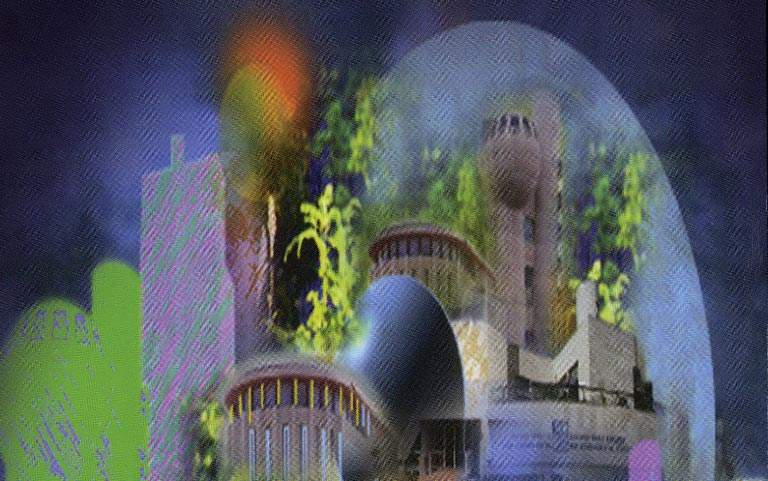The riddle of the neutrino
Institute scientists are participating in attempts to solve one of the major puzzles in physics today. This relates to the fate of the neutrino particles that are supposed to be streaming past us and through us. According to the standard model, the energy of the sun is produced in its core by the fusion of four atoms of hydrogen to give one atom of helium. In the course of this reaction, neutrinos (one of the fundamental particles) are also produced in a known, fixed proportion, and then escape from the core and travel through the solar system unhindered. A measurement of this neutrino flux could therefore give direct information on the processes taking place in the core of the sun.
Unfortunately, such measurement is a very difficult task, arising out of the very weak interaction of neutrinos with matter. (It is, of course, this same weakness that allows the neutrinos to escape from the center of the sun and reach us.) The weakness of the interaction means that the particles leave practically no traces of their passage. For example, most of the neutrino particles that reach the Earth pass through the planet in a fraction of a second, neither slowing down nor producing any reaction.
An international group of scientists, including several from the Weizmann Institute, designed and constructed a detector to measure the flow of neutrino particles from the sun. The detector, which contains 30 tons of the element gallium, was installed in an underground tunnel beneath a mountain in Italy (to protect it from cosmic radiation). When a gallium nucleus of mass 71 reacts with a neutrino particle, it produces one nucleus of the radioactive isotope germanium 71. This event occurs approximately once a day. The relatively small amount of germanium 71 atoms has to be extracted every few weeks from 30 tons of gallium. The extraction must be carried out with great efficiency and in pure conditions. The germanium 71 atoms then have to be counted by their radioactive decay.
This experiment has been running since 1985, and will continue for some 20 more years. The results obtained so far show there is a shortfall in the neutrino particle flow compared with what would be expected according to existing theories, while corroborating the theory of the nuclear origin of solar energy. There still seem to be some fundamental gaps in our understanding of neutrino properties and of the detailed mechanisms of how stars operate. This is the "riddle of the neutrino."
An alternative to dark matter
Galaxies and galaxy clusters are giant stellar structures that appear to contain too little mass (in the form of stars, interstellar dust and gas clouds) to generate enough gravity to hold themselves together. This phenomenon has led to the hypothesis that there exists in the universe a kind of "dark matter" which enables these objects to exist. But because it gives off neither light nor radiation, we cannot see it or measure it directly.
Most of the world's scientists today have accepted this view. But a Weizmann Institute scientist is proposing an original, revolutionary theory which says it is not necessary to hypothesize the existence of any dark matter. He suggests changing Newton's laws of gravitation or motion - something already done twice in the past, with the introduction of the theory of relativity and quantum theory. When the proposed change is made, and the behavior of galaxy clusters and galaxies is reexamined, they behave completely in keeping with the mass of material that appears to be contained within them. Recent astronomical data have provided an initial corroboration of this theory.






















